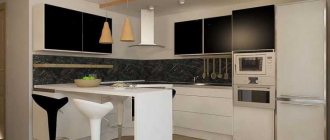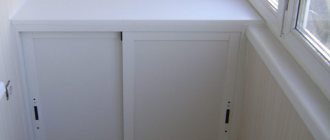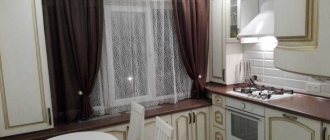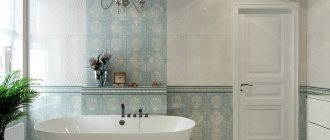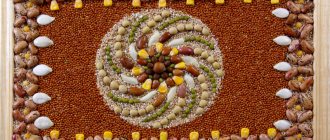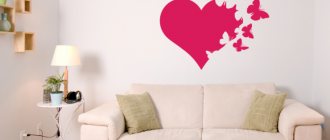Kitchen decor significantly diversifies the interior, decorating and complementing it. All kinds of paintings and panels for the kitchen will add uniqueness to the room, becoming its main “highlight”. Such products are made by hand, purchased in art stores or through online platforms.
A decorative panel is exactly that bright detail that will make the kitchen interior beautiful and original.
Design of panels in the kitchen: options (selection of photos)
A panel is, in fact, a picture in a frame, most often three-dimensional, color or monochrome. They place it in the center of a free wall, build it into a niche, decorate a kitchen apron, even glue it to the ceiling. Paintings highlighted with backlight look original.
The panel will become the main decoration of the kitchen, regardless of its location
It is important to remember that in the kitchen there is always high humidity, food odors, and the likelihood of contamination of any surface is higher than in other rooms. Therefore, “canvases” made using parts of plants, fabrics, paper, wood, are placed at the maximum distance from the cooking site.
The best solution for the cooking area would be a ceramic or glass panel
When choosing a painting, the size of the room is taken into account - the more spacious the kitchen, the larger the panel purchased.
Choosing panels depending on the style of interior design
Decorative panels for the kitchen can be chosen depending on the design style:
- Antique style . It is worth opting for a panel of tiles stylized as stone.
- Classic . It is recommended to opt for wood or ceramic tiles.
- Modern style . A panel made of tiles or fabric is suitable.
Types of panels for the kitchen
Original panels on the kitchen wall are made in various ways:
- using tiles;
- from textile materials;
- in the form of a collage of photographs;
- made of tempered glass;
- using decoupage;
- coffee paintings;
- modular options;
- from natural stone;
- from combinations of several materials.
When placing a panel on the wall, it is advisable that the composition is not obscured by other objects
From textiles
The textile artistic canvas is made in the form of appliqué, using the tapestry technique. Common themes include dishes, fruits, flowers. Embroidered versions are also common. The product is usually stretched onto cardboard, plywood, a hoop, a wooden frame, and placed under glass.
Textile paintings made using crochet technique
Strained glass
The glass version of the kitchen panel is very practical for an apron. Using special paints, any images are applied to glass. Less commonly, a picture is made from glass tiles, fragments of various colors and shapes, and pieces of mirrors.
Such decoration can be decorated with hand-made drawings, or represent a photograph with images of landscapes, cities or abstractions
Collage of photos
Photo collages are made up of both black and white and color photos. They are glued to a sheet of fiberboard or thin plywood, decorated with inscriptions, paper stars, hearts, flowers, lace, and inserted into a frame under glass so that they do not deteriorate from moisture.
Framed family photos can be used to decorate an accent wall in the kitchen.
It is recommended to place photo collages so that the sun's rays do not fall on them, due to which the images quickly fade.
Tile
A tiled picture is laid out on the wall, or less often, the floor is decorated. The product is a mosaic consisting of small tiles or larger ones decorated with a photo-printed design. The subject of the image is any, but most often - fruit, floral, abstract options.
Bright panel of colored mosaic on the kitchen apron
A kitchen apron made of multi-colored tiles looks great and is easy to clean.
A panel of tiles protects walls from the negative effects of moisture and high temperature
Coffee paintings
A coffee panel for the kitchen is made by gluing coffee beans onto a rigid base. In addition to coffee beans, pumpkin seeds, lupine, star anise, white and variegated beans, and curly pasta are used. The finished product is varnished and painted. This also includes coffee-themed photo wallpapers.
Using coffee beans, you can create both “flat” paintings and three-dimensional compositions
Decoupage
A painting made up of fragments of decoupage napkins, rice paper, and eggshells can decorate any interior. Gluing is done using PVA glue onto a piece of hardboard, cardboard, or plywood. For durability, the top is coated with spray varnish, having previously painted on individual fragments by hand.
Paintings using the decoupage technique are one of the most common ways to decorate kitchens and other rooms.
Other varieties
Other types of decoration include paintings:
- from pebbles, shells;
- entirely carved from wood;
- from pieces of veneer of different types of wood;
- molded from polymer or ordinary clay, salt dough;
- from beads, beads;
- created from broken glass, ceramic dishes;
- from champagne corks.
Using wine corks cut lengthwise, you can create original patterns and decorate various surfaces
Handmade wooden panel in the format of modular paintings
Types of tile panels for the kitchen
Ceramic tile panels are made in various designs and formats - from miniature length and width parameters to large-format ones designed for covering several square meters of wall.
Mosaic panel
Mosaic is a scattering of small ceramic or glass tiles ranging in size from 1 to 5 cm, called chips. For tiling a kitchen apron, mosaics with tiles ranging in size from 2×2 cm to 5×5 cm are most often used.
Mosaic panels received recognition for the absence of design restrictions - the material is in harmony with such styles as Provence, loft, and modern.
Another advantage of using ceramic mosaic is the visual increase in space. Also, a varied color palette allows you to create three-dimensional designs of various variations, for example, geometric patterns, floral arrangements.
The materials for the mosaic apron are glass, smalt, ceramics, and marble. But the disadvantage of this “application” is a large number of seams. When applying mosaic backsplashes, glass grout is required for the seams.
Glass panel with photo printing
Skinali is the name given to large sheets of glass with an image printed on them using digital printing.
A common location for kitchen panels is on the wall for the apron above the stove, since glass is an easy-to-maintain material.
To make the skinali, especially strong glass with a thickness of at least 5 mm is used. For greater confidence, tempered glass is used - it is 5 times stronger, but its cost is also noticeably higher.
The skins are easy to install; the glass is attached to the wall using various fastening systems. Professionals never use glue when installing glass, as it spoils the image.
Hand-painted panels
The main distinctive feature of the tiles, the pattern which is made by hand by a master, is the originality and uniqueness of the design. The painting on such tiles cannot be washed off, it practically does not fade, but if this happens, it will be to a small extent and very slowly.
Hand-painted panels are laid out using large kitchen tiles. The tiles on the kitchen panels are painted, then fired and covered with glaze. The result is a product similar to the one sold in stores.
Photoceramic panels
Photo printing technology is distinguished by the reliability and durability of the image. A “picture”, previously printed on decal paper using ceramic inks, is transferred to the plates. After drying and prolonged firing in a special oven for 10 hours, where the temperature reaches 900 degrees, a product called photoceramic tiles is obtained.
The main secret of the technology is ceramic dye. This is a special paint that includes organic and inorganic compounds. During firing, organic components burn, and inorganic dyes are fused into the upper layers of the tile surface. After this, the applied pattern and the enamel surface form a single whole.
The process of producing photoceramics is manual, painstaking work that takes a lot of time. At the same time, as a result of this process, kitchen tiles with a high-quality image are obtained.
Main themes of kitchen panels
The kitchen is a place for preparing and eating food, so everything in it should look appetizing and homely. Images of fruits, still lifes, summer fields, and forests are ideal. The exception is such styles as industrial, brutal, hi-tech, techno - for them it is permissible to use paintings with cars, mechanisms, urban landscapes.
Living green composition in the interior of an eco-style kitchen
Most popular topics:
- slices of fruit, citrus fruits;
- still lifes with various dishes, bouquets;
- wide-format images of flowers (roses, poppies, daisies, cornflowers, etc.);
- coffee, any coffee paraphernalia;
- folk ornaments of the countries of the world;
- House in the village;
- floral, geometric abstractions;
- sea with palm trees;
- domestic, wild animals, birds, fish.
Rustic style in a country style kitchen
Varieties
There are a huge number of ready-made decorative products that are easy to purchase in a specialized store. The range includes artistic accessories made from various industrial materials. Among them there are both fairly affordable serial products and premium-class original works. Each consumer can easily choose an option that is suitable for the price and matches the style of the room being decorated.
You can make similar elements with your own hands. The choice of source materials is limited solely by the imagination of the home craftsman. When making panels for the kitchen, cereals, grains, unnecessary cutlery, dried herbs and flowers, embroidery, beads, shells, buttons, broken shards, etc. are suitable.
It is important to remember that the kitchen is a place with certain functional features: high humidity, temperature changes, corrosive odors, splashes and drops. This means that for the panel you need to select materials that are resistant to such an environment.
It’s also nice if the bulk composition is easy to wash. An overly intricate product with a porous texture will quickly absorb unpleasant odors, grease and soot and lose its fresh appearance. To protect homemade compositions, home craftsmen recommend coating their creations with varnish.
Industrial products initially involve the use of practical materials that can withstand washing and other features of the kitchen area well.
Glass
This type of panel is practical. Glass surfaces have all the characteristics necessary for use in a kitchen. They are highly resistant to temperature fluctuations, do not absorb odors, and are easy to clean using modern detergents. Such products can be made to order according to your own sketch.
Images are applied to glass using vinyl film (adhesive to the inside of the panel) or UV printing. Such compositions look very bright and modern. They decorate interiors in high-tech, modern, minimalism, contemporary, and eclectic styles. Most often, panels are placed in the area of the apron, where, in addition to decorative functions, they serve as protection of the wall surface from grease and dirt.
The disadvantages of glass panels include increased fragility and significant weight of the product. A poorly secured composition can fall off the wall and break. Many aesthetes, in principle, consider glass not the most “cozy” material.
The presence of shiny glossy surfaces with bright images in the kitchen creates a feeling of some elation of the emotional mood. This is good in the morning when you need to get into the mood for work. However, in the evening, when you want to relax, glossy paintings are not pleasing.
Ceramic
This material has a number of undeniable advantages for use in the kitchen:
- moisture resistance;
- heat resistance;
- hygiene;
- environmental friendliness;
- resistance to temperature changes.
That is why panels, the elements of which are made of baked clay, decorate cooking rooms everywhere. This material looks very good in rustic kitchens.
A particularly good solution is to use pottery as elements of a panel for Provence. This style is generally characterized by the display of earthenware and porcelain dishes. A panel of beautiful saucers on the walls will be the highlight of a Provence style kitchen.
Compositions that use ceramic elements also look good. These can be either three-dimensional paintings with real dishes or products with clay shards. Volumetric still lifes specially made from ceramics look very elegant.
Tiled
This material is also widely used for finishing kitchens. Tiles made from this raw material are practical. That is why such a panel can delight the eyes of guests and household members with a fresh look for a long time.
Tile looks good in Scandinavian kitchens. This is where its slightly cool gloss is most appropriate. This style is characterized by the use of contrasting colors and strict geometric patterns.
Modern technologies make it possible to produce tiles with any patterns, including ready-made panels.
Mirror
This decor option is quite rare in kitchens. Mirror paintings look much more appropriate in bathrooms. However, if desired, a similar composition can be arranged in a food preparation room.
To create panels, craftsmen combine mirror fragments of various shapes and sizes. The advantage of such a composition is the ability to visually “expand” the room.
Additional wall accessories should not be used. The fragmented mirror surface is a self-sufficient decorative element.
Modular
This type of panel is considered very popular. Modular canvases represent several separate fragments that make up a single semantic composition. In this case, the paintings may have different dimensions.
Most often there are modular panels consisting of 3 parts, but if you wish, you can find or order a product that consists of 7 or more fragments.
The technology of drawing is photo printing. The predominant themes for the kitchen are dishes, vegetables and fruits, flowers. Modular panels are a wonderful decoration for modern trends. Such compositions look ideal next to advanced kitchen appliances and stylish modern furniture.
The ability to order fragments of any size allows you to use modular panels for decorating kitchens in the direction of minimalism. When choosing patterns, one should not forget about the need for a harmonious combination of decorative composition and other decoration.
From tiles
Tiles are one of the most popular materials for kitchens. It has high strength, heat resistance, hygiene, and environmental friendliness. That is why many designers propose decorating kitchens with such panels. Tile compositions look very stylish. The ability to order products according to individual sketches allows you to realize any customer’s ideas.
Most often, ceramic tiles in the kitchen are used to finish the apron. It is there that a panel that is appropriate in style will look very beautiful. The tiles are equally good for both modern and rustic kitchens. Wide possibilities for choosing patterns allow you to use it to decorate kitchens in any ethnic style.
Mosaic paintings look very elegant. A volumetric tile composition above the dining table will add sophistication to a classic cooking room. A beautifully laid out ceramic still life is an ideal themed panel for the kitchen.
With the help of modern technologies it is possible to create a “photo tile”. During the manufacturing process of these products, the source materials are heated, and special ink penetrates deep into the pores of the material. Thus, customers have the opportunity to decorate their kitchen with a panel in the form of a favorite family photo. Such images are highly durable and do not require special care.
Made of wood
This material attracts with its environmental friendliness and respectability. Wooden panels are an integral part of the decor of kitchens in ethnic styles and eco-style. You can make such compositions with your own hands, but to do this you need to have a developed artistic taste.
For work, use any boards, sticks, twigs, which are successfully combined with burlap, dry fruits, candied fruits, and forged elements. Skilled craftsmen with carving skills create real masterpieces. It is important to remember that untreated wood is not a very durable material.
The elements of the painting should be covered with paint and varnish products, which will extend the life of this original product.
One of the varieties of wooden panels are complex compositions made from wine corks. Some craftsmen put together amazing paintings using these seemingly unnecessary elements.
Wine corks can also be used to make an unusual frame for a homemade panel on a cardboard base. To do this, the master will need a sharp knife and glue. Wine corks are cut lengthwise into 2 equal parts. Then the halves are glued onto the cardboard with the convex side out. In this case, the location of the plugs can be varied by alternating the methods of their installation.
From coffee beans
It is most appropriate to use burlap as the basis for such a panel. This is due to the characteristics of the materials and their natural color and texture harmony.
When making coffee panels, it is important to remember that for better attachment, glue must be applied to each grain.
The theme of such panels suggests itself. The images of cups with a steaming drink look very beautiful. It is appropriate to enliven the composition with cinnamon sticks.
From cereals
Panels collected from various types of seeds look very interesting. In this case, it is enough to use only 2 types of cereals and create simple contrasting images. And if you wish, you can be more creative and spend time on a complex layout of a masterpiece from cereals and seeds of different sizes and shades.
Of course, it is easiest to work with large fragments, such as beans, corn, peas, and sunflower seeds. However, smaller elements make for more elegant paintings.
To create such panels you will need cardboard, glue and materials. The order of work is as follows:
- Transfer the outlines of the future drawing onto the cardboard.
- Lubricate the surface of the base with glue.
- Place the grain.
- Turn the product over. This is necessary to assess the quality of gluing. Poorly fixed fractions will fall out, and the picture will have to be modified.
- After installation and drying, the panels should be treated with a special transparent varnish.
Decorative features of tile panels
The painting, made of tiles, is medium in size and sometimes takes up half the wall. Products with photo printing look the most interesting - any image can be applied to them; there are options for laying them out on the floor, walls, or apron. In terms of color, the picture should complement the existing interior, but bright, accent options are acceptable.
A panel of patterned tiles on the kitchen apron in Provence style
Kitchen panels made from scrap materials - applications and installations
A Provence style kitchen can easily be decorated with a textile panel created using the patchwork technique. By the way, such decoration can also be practical - for example, a “picture” made of fabric can be supplemented with spacious pockets that can accommodate a variety of kitchen items.
If you like using improvised means, then you can easily make a picture with your own hands from what is stored in your kitchen cabinet:
- Fragrant oriental spices;
- Coffee beans;
- Beans;
- Macaron;
- Tea leaves;
- Bay leaf;
- Cinnamon sticks;
- Orange peel;
- Cereals (by the way, you can use any cereal – from semolina to peas);
- Orekhov;
- Even from bagels and bagels!
Such improvised (and even old) materials as:
- Origami paper figures;
- Nails;
- Old boards (as a base);
- Pieces of fabric, buttons, yarn, rhinestones;
- Bottle caps;
- Fridge magnets;
- Wine corks;
- Maps of your home country or region;
- Magazines and newspapers, yellowed books and atlases;
- And many many others.
This panel will fully demonstrate your creative imagination in kitchen design and will become an original decoration for the kitchen apron. As for the manufacturing process, everything is very simple:
Thick cardboard is covered with lightened high-quality burlap. The base material sheet is tightly stretched onto the cardboard using decorative nails. Compositional elements, for example, cereals, are laid out on the front side. All materials are firmly fixed with glue. To hang a picture on the wall, you will need a strong cord, but you can also use a magnet if you plan to place the decoration on a metal surface.
You can also make luxurious installations for the kitchen - for example, from unnecessary cutlery. It is better if such panels are in harmony with the design of the apron - original stickers are suitable for this. Or you can make several paintings of the same type at once.
Such a DIY painting will look extraordinary in any room - the main thing is to choose the right arrangement of fixtures and colors. Bright, dense fabric is most often chosen as the basis for the plot, and a painted wooden frame serves as the frame. Unneeded knives, forks, spoons are placed on top of the fabric - they need to be cleaned, degreased and painted to create a striking contrast with the background.
Experienced needlewomen have long known that there is no need to throw away wine corks, because they can be used to make such stylish and functional wall decorations.
Have you accumulated a lot of magazines and newspapers? Is your library overflowing with old books with yellowed pages? Then you will love the ideas for making paper panels.
A panel using flowers and plants is simple and beautiful! Such an accessory can decorate a kitchen in a classic, Provence, shabby chic, or country style.
Using lace, paint and canvas you can create an elegant picture.
Ideas for making decorative panels for the kitchen from various materials
The most original panels on the kitchen wall look completely different in the photo: these are three-dimensional reproductions of paintings by famous artists, paper protrusions, plaster frescoes, straw appliqués, etc.
A panel made from tile fragments - a unique design for a kitchen backsplash
The product is made from pieces of eggshells, corks, and ice cream sticks, and is painted by hand. Sometimes a composition is made from cutlery, including beautiful toy dishes, which is attached to a piece of plywood and inserted into a frame. A beautiful fabric can be woven from reeds, strips of fabric, and colored laces.
A bright and positive decoration made from multi-colored felt - this decor can become a highlight of the kitchen interior
How to make a panel on the wall, following the style of the interior
When an apartment is decorated in strict adherence to a certain style, the decor must certainly correspond to it. To create a stylish wall panel yourself, we suggest that you familiarize yourself with the main criteria inherent in a particular direction.
Wall panel in classic style
The classic direction involves a touch of luxury in any element of the interior. At the same time, there is aristocratic restraint. For example, a mirror panel on the wall. Modern technologies make it possible to create many effects on mirrors, including artificial “age-old” abrasions, which will give the canvas a particularly valuable look. The frames of paintings and compositions can be well decorated from figured baguettes with relief designs.
Wall panel in Provence style
The originality, grace, and comfort of ancient French country life can be complemented by a wall panel in the Provence style. Dishes will be a good material. Look at the photo where a luxurious composition was created using painted plates. The colors of landscapes, as if faded in the sun, combined with the lightness of the French character, plant motifs, and rough wood elements are appropriate here.
Wooden wall panel in eco style
Decorating a room in an eco-friendly manner involves using natural materials. Of course, wood takes first place here. A wooden wall panel in eco style can be “woven” from branches, preserving their original appearance, using varnish compounds or painted to match the color of the interior. One of the options shows a vertical panel on the wall in the form of a branched tree, obtained by sawing solid wood.
Art panel on the wall
The modern art deco direction is sophistication, flexibility of lines, alternation of contrasting colors, geometric shapes, multifaceted lighting. An art panel on the wall can be decorated with glass, mirror surfaces, elegant compositions with additional lighting, as well as abstract paintings.
Options for wall panels in modern directions
Modernity dictates its own rules. Popular trends of minimalism and high-tech offer us to almost completely abandon decoration, but in an apartment, we still want to somehow diversify the empty space. Modern wall panels have a laconic appearance, but, nevertheless, are not devoid of originality. Just look at the high-tech chessboard decorating the office or the extraordinary mirror composition of minimalism.
Panel on the wall of a loft interior
The stylish loft stands out sharply from other trends - it is simply impossible not to recognize it. Brick walls and bare concrete interiors require additional decorative details that will give a “lived-in” look. To decorate a panel on a loft wall, large meter-long canvases (often wooden) with various images are often used: social posters, symbols, works of contemporary artists, black and white photographs. The photo shows a successful design of a wall panel made from a wooden pallet.
Chinese wall panel: Asian notes in a European interior
Chinese culture, formed over centuries with the interweaving of various traditions, does not support the oversaturation of the interior with various decor. One or two decorations are welcome here, but they certainly carry some meaning. A Chinese wall panel can be made of canvas onto which images of animals, birds, and hieroglyphs are applied.
It is important to understand here that each drawing is endowed with a philosophical meaning, symbolizing something. Therefore, before placing such a canvas in your home, you should consult with knowledgeable specialists.
Italian wall panel: Mediterranean motifs
Picturesque Mediterranean landscapes, ancient harbors, spacious valleys of luxurious vineyards, historical architecture of Ancient Rome - all this will help you create an Italian wall mural. Mosaic paintings are appropriate here, which will colorfully fill the exquisite interior in pastel colors.


